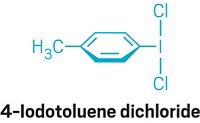Advertisement
Grab your lab coat. Let's get started
Welcome!
Welcome!
Create an account below to get 6 C&EN articles per month, receive newsletters and more - all free.
It seems this is your first time logging in online. Please enter the following information to continue.
As an ACS member you automatically get access to this site. All we need is few more details to create your reading experience.
Not you? Sign in with a different account.
Not you? Sign in with a different account.
ERROR 1
ERROR 1
ERROR 2
ERROR 2
ERROR 2
ERROR 2
ERROR 2
Password and Confirm password must match.
If you have an ACS member number, please enter it here so we can link this account to your membership. (optional)
ERROR 2
ACS values your privacy. By submitting your information, you are gaining access to C&EN and subscribing to our weekly newsletter. We use the information you provide to make your reading experience better, and we will never sell your data to third party members.
Environment
More On Sodium Azide
June 14, 2010
| A version of this story appeared in
Volume 88, Issue 24
It was important to read the recent letters that revisited the dangers associated with the use of sodium azide (C&EN Jan. 11, page 4; April 5, page 5; and Nov. 9, 2009, page 8). None of these letters, however, mentions the hazards of exposing sodium azide to halogenated solvents.
We earlier reported the probable production of diazidomethane when methylene chloride was used as an extraction solvent in the workup of a reaction that employed excess sodium azide as a reagent (C&EN, March 14, 1994, page 4). It is convenient for chemists to use heavier than water chlorinated solvents for extraction of reaction mixtures that are diluted with water. However, if the aqueous phase contains azide, this procedure can lead to the production of the very explosive diazidomethane (N to C weight ratio of 6). Chlorinated solvents should never come into contact with sodium azide.
Norton P. Peet
North Andover, Mass.



Join the conversation
Contact the reporter
Submit a Letter to the Editor for publication
Engage with us on Twitter